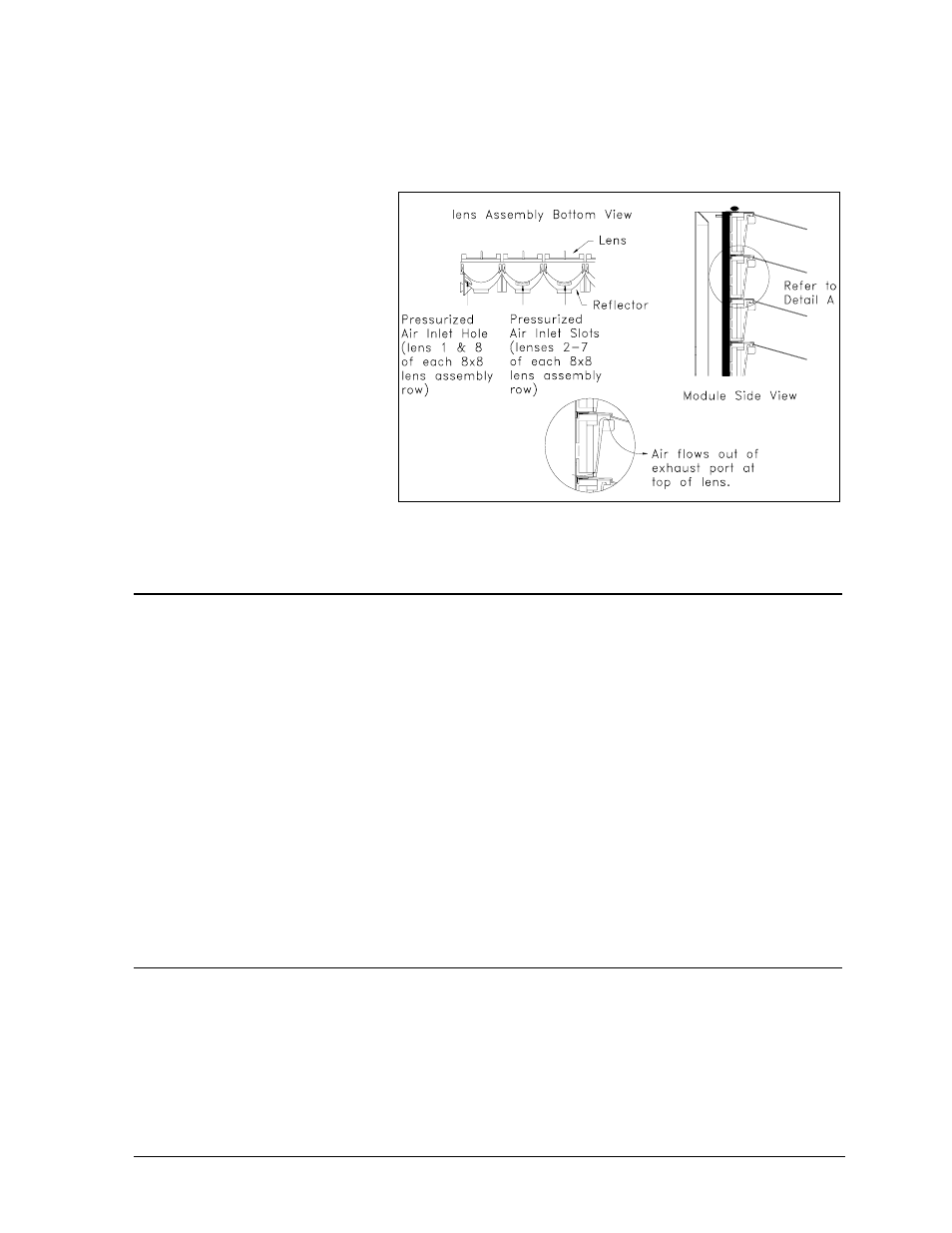Daktronics AB-1600-1.5,2.5 User Manual
Page 61

Maintenance & Troubleshooting
4-25
Perform the smoke test in the following manner.
1. Light a smoke ball or similar smoke-producing device beneath a fan inlet.
2. Observe where the smoke exits the display. It should only exit through the lens exhaust
ports. If smoke exits
from between two or
more lens/reflector
assemblies the weather
stripping likely needs
replacing.
3. If smoke does not exit
a particular group of
lenses, remove the
lenses to clean out any
debris, replace the
lenses and retest. A
failed fan may create
an effect similar to
that of clogged lens
exhaust ports.
4.20
Structural Maintenance & Inspection
Complete a yearly inspection to maintain safe and dependable display operation. This inspection
should address the following issues.
•
=
Corrosion
Check the paint and look for corrosion, especially at footing, structural tie points and ground rods.
•
=
Loosened Hardware
Verify fasteners, such as bolts and rivets, have not come loose. Check fasteners and tighten or
replace them as required.
•
=
Water Stains
Check the inside of the cabinet for any signs of water intrusion. Pay special attention to the area
around the eye bolt holes
•
=
Electrical Components
Check all electrical components closely for signs of corrosion.
If any of the above conditions are present, take action to correct the situation.
4.21
Cleaning the Signal Connectors
If it becomes necessary to remove or replace a signal cable, clean the plugs and the circuit board jacks
with DeoxIT (Daktronics part number CH-1015). Inspect and clean the jacks and plugs thoroughly to
ensure the absence of any foreign matter. The presence of dirt or water may cause signal interconnect
problems.
After cleaning the parts, push the plug into a jar of CaiLube (Daktronics part number CH-1019),
ensuring the paste wets the plug to a depth of at least 1/8” on all four sides. Also, check to make sure
all of the pinholes of the plug fill with paste and that sufficient paste is present to form a “V” on the
Figure 59: Lens Airflow
